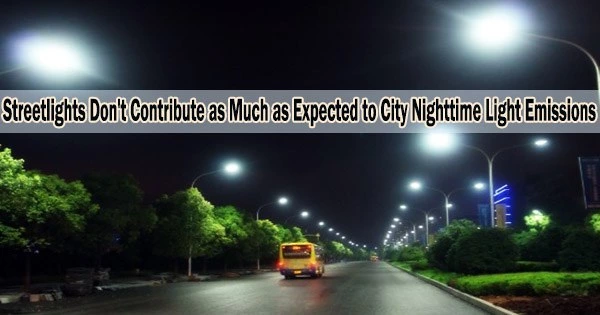How much of the light that is captured by satellites when Earth is at night comes from streetlights?
Thanks to “smart city” lighting technology, which enables cities to lower their lights, a team of experts from Germany, the USA, and Ireland have for the first time provided an answer to this question using the example of the American city of Tucson. The result: only around 20 percent of the light in the satellite images of Tucson comes from streetlights. The study is published today in the journal Lighting Research & Technology.
The researchers experimented by adjusting the streetlight brightness in Tucson, Arizona, and tracking how this altered how bright the city appeared from above. Dr. Christopher Kyba from the GFZ German Research Centre for Geosciences led the team that conducted the experiment, and said the work is important because it shows that smart city technologies can be used to perform city-scale experiments.
“When sensors and control systems are installed throughout an entire city, it is possible to make a change in how the city works, and then measure the impact that change has on the environment, even from outer space,” Kyba said.
Over a period of 10 days in March and April of 2019, Tucson officials changed the brightness settings for about 14,000 of the city’s 19,500 streetlights. In Tucson, the majority of streetlights typically start out at 90% of their maximum lighting and decrease to 60% after midnight.
Instead, during the experiment, the city alternated between dimming the lights all the way to 30% and brightening them to 100%. The city lights were observed by the US-operated Suomi National Polar-orbiting Partnership (NPP) satellite, which is famous for its global maps of light at night. During the test, the satellite captured photographs of Tucson on four nights without any clouds, and on two more nights with standard lighting.
Instead of dimming lights to the same level late each night, a city could instead dim to 45% on even days and 55% on odd days. City residents wouldn’t notice any difference, but that way we could measure how the contribution of different light types is changing over time.
Dr. Christopher Kyba
The researchers discovered that, on an average night, only around 20% of the light in satellite photos of Tucson came from lamps by comparing the brightness of the city on the six separate nights.
The results have important implications for sustainability, according to study co-author Dr. John Barentine from the International Dark-Sky Association. Barentine, Kyba, and their co-authors measured the sky brightness over Tucson from the ground in a second experiment carried out at the same time.
As with light emissions observed from space, they investigated how changing the brightness of street lighting influenced the sky brightness and demonstrated that the majority of the sky brightness over Tucson is also caused by other sources.
“Taken together, these studies show that in a city with well-designed streetlights, most of the light emissions and light pollution come from other lights,” Barentine explaines, including light sources such as bright shop windows, lit signs and facades, or sport fields.
The authors contend that in order to lessen light pollution, local and federal governments must consider factors other than merely street lighting.
The variation in streetlight brightness between different nights, according to the experts, is hardly noticeable to persons walking along the street since our eyes quickly adjust to the light levels. They claim that during the test, the city didn’t receive any feedback or concerns regarding the altered lighting.
Additionally, there is no proof or indication that the experiment’s experimentation with lower lighting levels had any negative effects on public safety. Kyba is therefore excited by the idea of performing such experiments more regularly, and in other municipalities.
“Instead of dimming lights to the same level late each night, a city could instead dim to 45% on even days and 55% on odd days,” Kyba suggested. “City residents wouldn’t notice any difference, but that way we could measure how the contribution of different light types is changing over time.”





